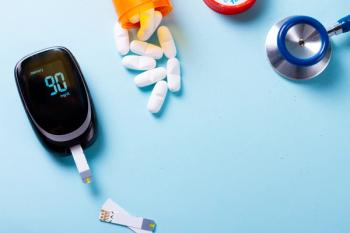
Managing hyperglycemia in Type 2 diabetes: Here's how
The American Diabetes Association (ADA) and the European Association for the Study of Diabetes (EASD) recently created a consensus statement on the management of hyperglycemia in patients with Type 2 diabetes. "This is a consensus document that is supported by evidence from clinical trials. Some of the recommendations are based on expert opinion, but this is true for any guideline. These guidelines will likely be useful to pharmacists and nurses because many times their practice is driven by guidelines," stated Stuart Haines, Pharm.D., FCCP, FASHP, professor and vice chair for education at the University of Maryland school of pharmacy.
It is estimated that 20.8 million children and adults in the United States have diabetes. Type 2 diabetes accounts for about 90%-95% of all cases of diabetes. Additionally, there are approximately 41 million people who have pre-diabetes, a condition that raises the risk of developing Type 2 diabetes.
The consensus of ADA and EASD is that a hemoglobin A1C of ≥ 7% should serve as a point at which to initiate or change therapy with the goal of achieving and maintaining glucose and hemoglobin A1C levels as close as possible to the normal range. The first step in the initial treatment of the Type 2 diabetic patient includes lifestyle changes to decrease weight and increase activity. ADA and EASD recognize that most Type 2 diabetics fail to achieve and maintain metabolic goals with lifestyle changes because they gain or fail to lose weight, have a progressive disease, or a combination of factors. Therefore, it is recommended that metformin be initiated concurrently along with lifestyle modifications. "Metformin is the drug of choice for the majority of obese patients with Type 2 diabetes-unless there is a contraindication such as inadequate renal function-because it effectively lowers blood glucose, positively impacts weight, rarely causes hypoglycemia, and has a relatively low cost. However, insulin should be considered in any patient with a hemoglobin A1C greater than 10% or a patient who is lean or losing weight. In such cases, an absolute lack of insulin is often the primary problem," added Haines.
When a second agent or, potentially, a third hyperglycemic medication is added, the synergy of particular combinations and interactions should be considered. "The use of a sulfonylurea along with metformin may be beneficial to many patients because of their complementary mechanisms of action and they are relatively inexpensive. Additionally, the combination is available as a single pill that reduces the pill burden for the patient," stated Haines. Insulin may be added to metformin to augment the effects of oral therapy. "Long-acting insulin administered, usually at bedtime, can help many patients achieve good glycemic control. Patients with very elevated blood glucose readings (greater than 300 or 400 mg/dL) or a hemoglobin A1C greater than 10% will probably require a short- or rapid-acting insulin prior to meals in addition to basal insulin," added Haines. Thiazolidinediones do not have as great a blood glucose-lowering effect as insulin or sulfonylureas. "Thiazolidinediones are a good therapy for patients who are overweight and when insulin resistance is their main problem," added Haines.
Pramlintide, exenatide, glinides, and α-glucosidase inhibitors and are not included in the treatment algorithm due to their lower overall glucose lowering effectiveness, limited clinical data, and/or expense. Additionally, published clinical studies to date have not demonstrated whether inhaled insulin, given as monotherapy or in combination with a long-acting insulin, can lower the HgA1C to ≥ 7%. "Until the long-term outcome studies are completed, I think these new therapies should play a limited role. Perhaps someday they will be considered the first-line therapies, but we need more data to determine if they are better than more established treatments," stated Haines.
Newsletter
Pharmacy practice is always changing. Stay ahead of the curve with the Drug Topics newsletter and get the latest drug information, industry trends, and patient care tips.



























































































































































